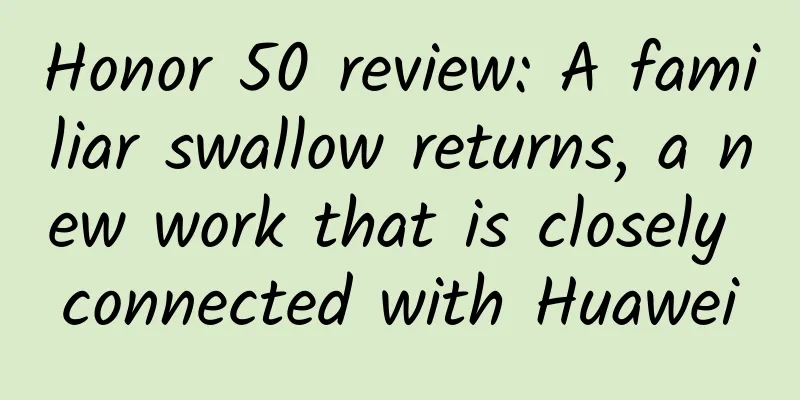Always there but often ignored, this "multi-faceted player" is actually the "killer weapon" of the intestine

|
One autumn day, children from a middle school in a district of Chongqing devoured the lunch that had been prepared in the cafeteria: braised beef, stir-fried pork with dried bean curd and rice. Everything seemed peaceful and tranquil. After more than 10 hours of peace, some students began to experience abdominal pain and diarrhea the next morning. The doctor in the infirmary suspected food poisoning and immediately notified the leader and contacted the CDC. The test results of the remaining food and the students' diarrhea samples showed that the stir-fried pork with dried bean curd contained a large amount of Clostridium perfringens. Experts explained that this bacterium grows faster at room temperature and the enterotoxins it produces can easily cause food poisoning. Clostridium perfringens is widely present in the natural environment. In addition to often causing food poisoning, it is also one of the main culprits of gas gangrene and necrotic enteritis. Let’s take a brief look at this anaerobic bacteria that has always existed but is often overlooked, and learn about its transmission routes, main symptoms and prevention measures. What is Clostridium perfringens? Clostridium perfringens is a Gram-positive, anaerobic bacterium belonging to the family Clostridiaceae. It is ubiquitous in the natural environment, especially in soil, animals and the human intestines, and has strong environmental resistance. When Clostridium perfringens infects humans, the diseases it causes vary due to differences in bacterial type and route of infection. Common diseases currently include gas gangrene, food poisoning and necrotizing enteritis. Clostridium perfringens has multiple virulence factors, the main toxins of which are two enterotoxins (CPE, β2) and four exotoxins (α, β ... Figure 1 Clostridium perfringens grows black colonies on tryptone-sulfite-cycloserine (TSC) agar plates after anaerobic culture. It is a Gram-positive, short, rough bacillus. How does Clostridium perfringens cause food poisoning? The enterotoxins produced by some types of Clostridium perfringens (type A) (and a few types of Clostridium perfringens C) are the main pathogenic factors that cause food poisoning. The mechanism by which Clostridium perfringens causes food poisoning is mainly due to the ingestion of food containing a large number of bacteria, especially the enterotoxins released by the bacteria in the intestines. Clostridium perfringens grows rapidly and can multiply rapidly in a short period of time under suitable temperature conditions (usually 20°C-50°C). When food is stored under inappropriate conditions (such as room temperature), the bacteria proliferate and produce toxins[3]. After consuming contaminated food, the human body may experience symptoms within a few hours. The peak season for food poisoning is usually summer and autumn, because the warm environment is more conducive to the reproduction of bacteria. However, due to improper food storage and handling, it may occur all year round. Symptoms of Clostridium perfringens food poisoning The incubation period for C. perfringens food poisoning is usually 8 to 24 hours, and the main symptoms include: Abdominal pain and cramps: Mostly severe abdominal pain. Diarrhea: It is usually watery but will not contain blood or mucus. Nausea and vomiting (rare): Some infected people may experience mild nausea. No fever: This is different from other bacterial food poisonings, in which the infected person usually does not have a fever. Symptoms generally subside within 24 hours, but in a few cases, they may last longer. Most patients recover on their own, but for people with weakened immune systems, the elderly, and children, the infection may be more severe and may even lead to complications. Figure 2 Symptoms of Clostridium perfringens food poisoning High-risk foods contaminated with Clostridium perfringens Clostridium perfringens food poisoning is commonly associated with the following types of food: Meat and meat products: especially undercooked chicken, beef and pork, as well as processed meats such as ham and sausages. Beans: such as red beans, soybeans, etc., especially if they are not fully cooked or stored properly. Seafood: Some seafood products may also become contaminated if stored under improper conditions. Stews and soups: These can harbor bacteria, especially if left out at room temperature for too long. Pre-cooked foods such as rice and pasta can become a breeding ground for bacteria if they are not cooled and reheated properly. How to prevent Clostridium perfringens food poisoning? To prevent food poisoning caused by Clostridium perfringens, the following principles need to be followed during food storage and handling: Keep food at safe temperatures: Make sure cooked food is kept above 60°C and refrigerated food below 4°C. Cool large pots of food promptly: Large quantities of soup or stew should be portioned out, cooled to safe temperatures as quickly as possible, and stored in the refrigerator. Keeping food separate will lower the temperature faster and reduce the chances of bacteria growing. Proper heating and reheating: When reheating food, heat it to at least 74°C to effectively kill any bacteria that may be present. Especially for leftovers, do not simply reheat them, but make sure the internal temperature reaches the safe standard. Hygienic operation: During cooking and food handling, pay attention to keeping your hands and utensils clean to avoid cross contamination. Avoid prolonged exposure of food: Cooked food should not be left at room temperature for long periods of time, especially in warm environments where bacteria can easily multiply. Refrigerate food as soon as possible after a meal. Figure 3 Prevention of Clostridium perfringens food poisoning Treatment of Clostridium perfringens infection For mild C. perfringens infections, patients usually recover within 24 hours by drinking adequate fluids to prevent dehydration. However, elderly people, young children, or people with immune deficiencies should seek medical attention as soon as possible if symptoms continue to worsen. Clostridium perfringens is a pathogen that cannot be ignored. It causes food poisoning by contaminating food, posing a threat to people's health. By understanding its transmission mechanism and risk factors and strictly following food safety guidelines, the risk of Clostridium perfringens infection can be effectively reduced. Every detail of food safety is the key to protecting the health of yourself and your family. References: [1] Kiu R, Hall LJ. An update on the human and animal enteric pathogen Clostridium perfringens. [J] Emerg Microbes Infect. 2018,7(1):141. [2] Brynestad S, Granum PE. Clostridium perfringens and foodborne infections. [J] Int J Food Microbiol. 2002,74(3):195-202. [3] Komatsu H, Inui A, Sogo T, Fujisawa T. Clostridium perfringens. [J] Nihon Rinsho. 2012, 70(8):1357-61. Source: Chongqing Science Writers Association Author: Deputy Director Zhu Yong, Deputy Director Xie Jiawei, and Director Jiang Yuanya of Chongqing Rongchang District Center for Disease Control and Prevention; Director Zou Jingbo of Chongqing Yongchuan District Center for Disease Control and Prevention Audit expert: Li Hanbin Statement: Except for original content and special notes, some pictures are from the Internet. They are not for commercial purposes and are only used as popular science materials. The copyright belongs to the original authors. If there is any infringement, please contact us to delete them. |
<<: Can drinking soda water lower uric acid and treat gout? The real drink is this
>>: Microbes: Look, I’m generating electricity
Recommend
Can the 360 version of bidding software only obtain rankings from actual promotions?
(1). The mobile version of 360 is basically 0. Cu...
What is the method for consecrating the Wenchang Pagoda?
Wenchang Tower is a kind of mascot, and its abili...
Is the investment fee for Chenzhou women's clothing mini program high? Chenzhou women's clothing mini program investment fee and process
Starting a business requires costs, and mini prog...
It took me more than a month to summarize 14 routines for event operations.
Whether it is an online or offline activity; whet...
How did the 100,000+ posts on Toutiao, UC, and WeChat come about?
After a piece of content is produced, how to dist...
How to plan an event? 6 big steps!
The concept of "organizing an event" ma...
It’s cold, do you feel the static electricity?
In our daily life, you must have felt static elec...
256G or 512G? There are some tricks to choosing mobile phone memory
In order to meet the needs of users for storage, ...
The boat went up the elevated road! Netizen: It didn't shake, but my legs were weak...
In the mountains A bridge across it A ship loaded...
Live Streaming Script Design Guide!
When designing the script before live broadcast, ...
From popular to unpopular, a review of the history of tablet computers
On April 3, 2010, Apple released the first genera...
What does abnormal tumor marker mean? Don’t panic!
Audit expert: Zhang Jianwei Deputy Chief Physicia...
A microwave oven is the key to 2-nanometer chip manufacturing
A home microwave oven modified by scientists is h...
Xiaohongshu store operation, delivery and promotion
At the beginning of 2022, Xiaohongshu's commu...
People with weak spleen and stomach cannot hide their face! These 4 symptoms need to be treated in time
Mr. Zhang, 45 years old, has been feeling stomach...









